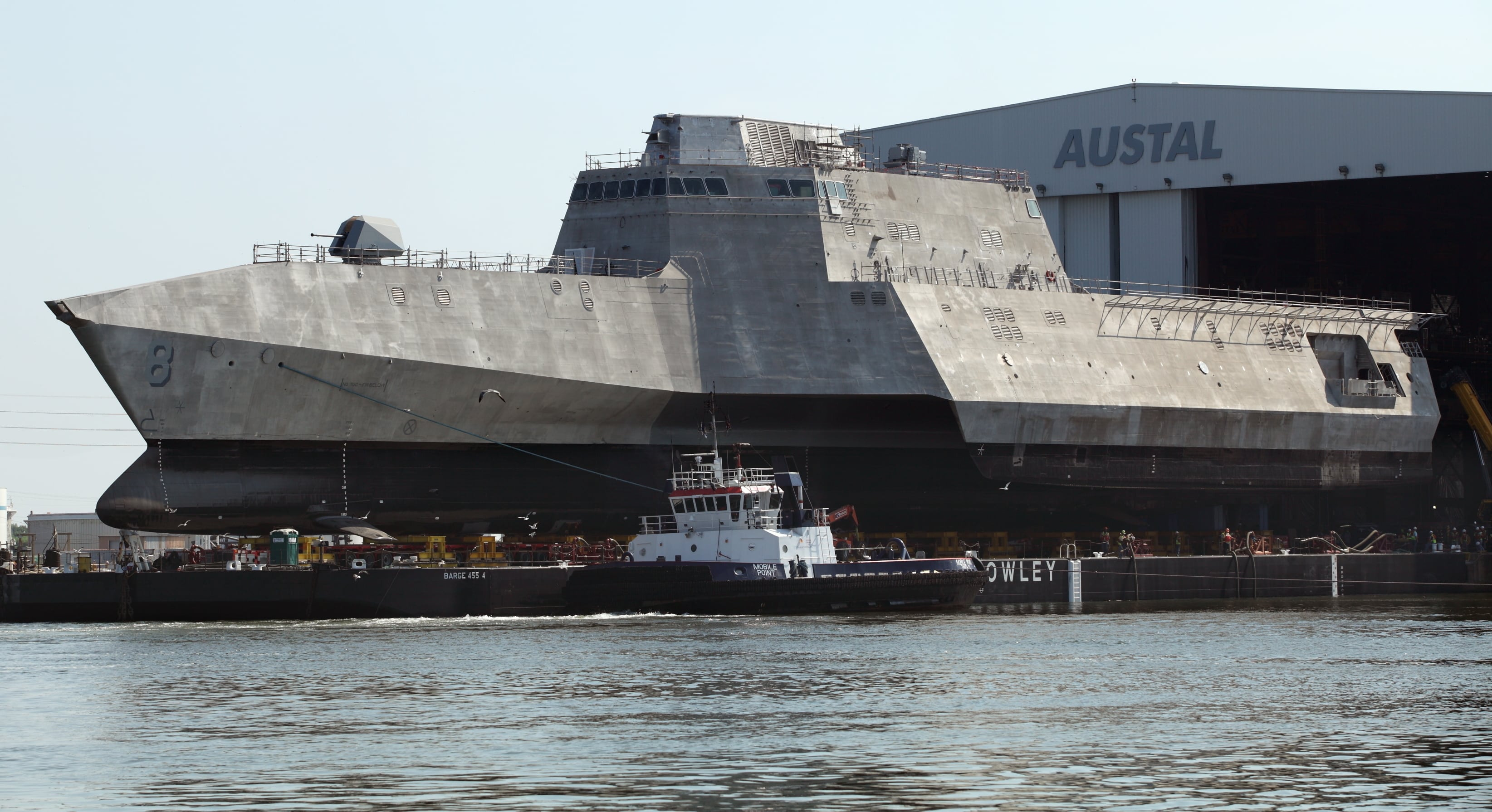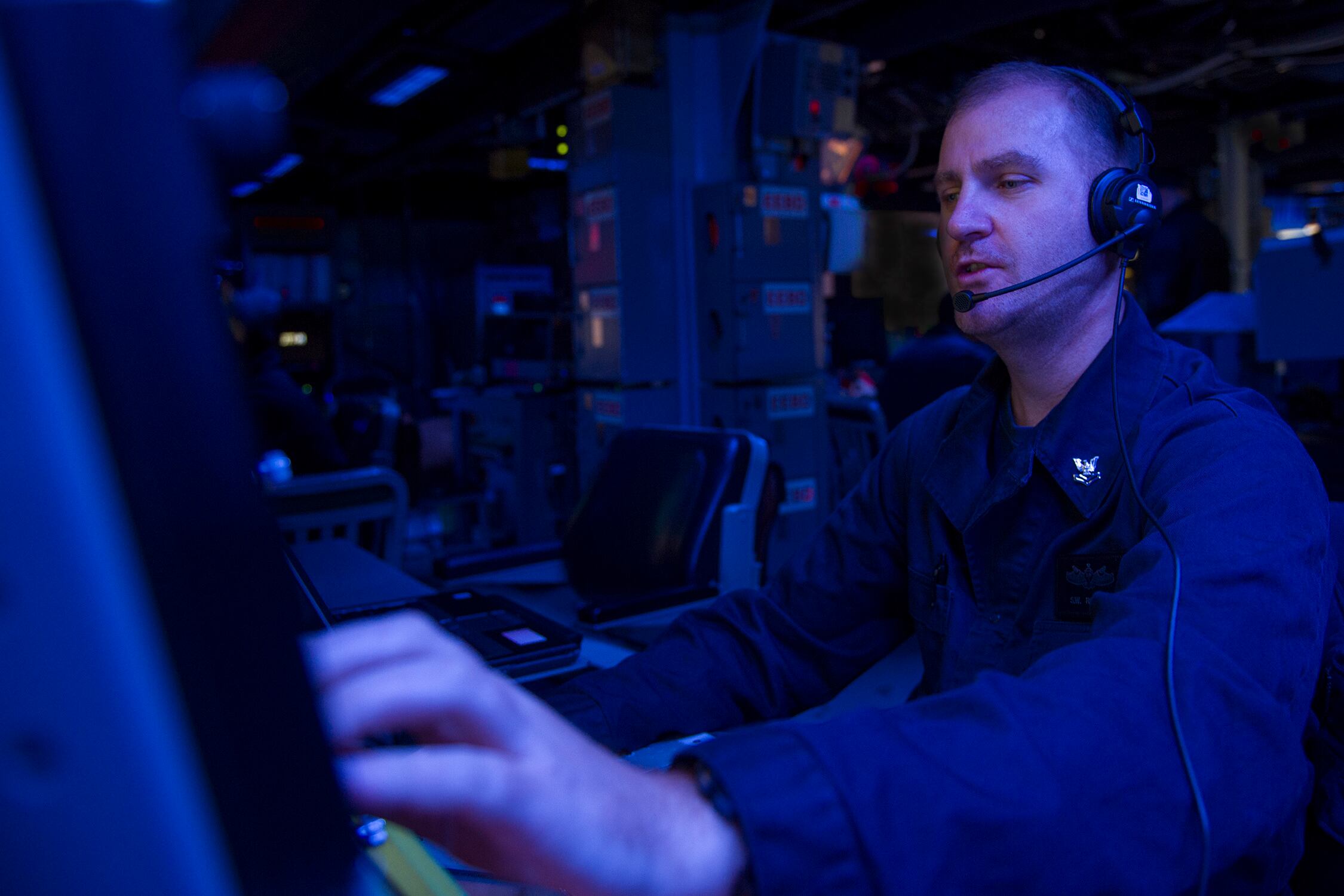In a hearing before the Senate Armed Services Seapower Subcommittee, several noted experts called into question the U.S. Navy’s underlying analysis in the kind of frigate its looking for to replace its beleaguered littoral combat ship, or LCS, program.
In early July, the U.S. Navy released an RFI seeking a mature design that can be adapted to couple with combat and mechanical systems already in wide use in the U.S. Navy and can fully integrate with a carrier strike group. Among the capabilities the U.S. Navy wanted in its FFG(X) was the ability hunt submarines, kill ships over the horizon and operate independently in high-end threat environments, which would mean a robust counter-missile capability.
The U.S. Navy is looking to buy 20 FFG(X) ships.
In response to a question from subcommittee chairman Sen. Roger Wicker, R-Miss., Bryan Clark, a retired submariner and analyst with the Center for Strategic and Budgetary Assessments, said he thought the RFI was too vague and questioned whether the u.s Navy actually knows what it wants.
“I think what [the RFI] does is open up the aperture too much in terms of what that future frigate could be,” Clark said. “It makes it seem like it could be anything from a ship that’s only able to do surface warfare and [surveillance] missions in support of distributed lethality, the Navy’s new surface concept — a relatively low-end ship or less-capable ship — all the way up to a frigate that can do air defense for another ship and do anti-submarine warfare.
RELATED

“I think the Navy needs to — instead of opening a wide aperture and seeing what comes in — make some choices about what they need the ship to do, and it needs to be a more capable ship that’s able to do multiple missions.”
Ronald O’Rourke, a naval expert with the Congressional Research Service, refrained from overtly criticizing the U.S. Navy’s RFI, but said the Navy needs to make sure it gets the underlying analysis right and not to rush to build before knowing exactly what it needs. That, he said, was what the U.S Navy got wrong from the outset on the LCS.
“This is going to be our third attempt, in the last 15 years, to try and get right the issue of small surface combatant procurement,” O’Rourke said. “When we started the LCS program in the 2002-2003 timeframe, the Navy didn’t do all the homework, in my view, that it needed to, to provide a firm analytical foundation for the program.”
“And the weakness in that analytical foundation, in my view, that I’ve argued for many years now, is a principal reason behind many of the difficulties that the LCS program experienced in subsequent years. They have a chance to get it right again this time. … If they don’t put a firm analytical foundation under this effort, there will be a risk of this effort also experiencing difficulties in execution in the years ahead.”
Jerry Hendrix, a retired Naval Flight Officer and analyst with the Center for a New American Security, said he was particularly concerned with the requirement for fuel and range at 16 knots, which the U.S. Navy set at 3,000 miles.
Hendrix argued that the U.S. Navy never runs its ships down to empty on the fuel tank, so 3,000 miles of maximum range would mean that the ship would have to conduct a refueling during a transatlantic crossing. Hendrix argues that convoy escort duty should be a key consideration for the new frigate — convoys would be vital in getting troops and supplies to Europe in the event of a conflict with Russia — and that as a result, more range would be necessary.
“It struck me that something in the 4,500- to 6,000-mile range ought to be, sort of, a walking in the door minimum, and the higher the better in order for it to give the most independent steaming out of it,” Hendrix said.
Hendrix also argued that the ship should be able to defend itself from air threats but shouldn’t be part of a layered air defense of the carrier because other ships can perform that mission.
“Where we have a real deficit is anti-surface and anti-submarine warfare,” Hendrix said. “And any time that you cause a ship or require a ship to be good at all things, you’re going to drive up the cost factor. … I look generally in the $700 million to $850 million range per unit, that if you exceed that by adding in air defense capability, certainly, we start edging over $1 billion per copy. And, at that point in time, we’ll find ourselves in argument [arguing,] ‘Shouldn’t we just buy some more [Arleigh Burke-class destroyers]?”
‘Network everything’
What the U.S. Navy needs more than anything is to increase its networking between units in order to increase the capacity of the current fleet, according to the U.S. Navy’s top officer, Adm. John Richardson. And in the RFI, the U.S. Navy, above all else, seems to want the ship to be able to plug into a larger network of sensors to increase its situational awareness of any given theater.
“In the extreme, I’d want to network everything to everything,” Richardson said in a recent talk.
The RFI envisions the FFG(X) as being able to serve as a platform for manned and unmanned sensors and be able to beam the intelligence gathered back to the fleet.
RELATED

In an interview with Defense News, the chief of naval operations’ Surface Warfare Directorate said part of that will be facilitated by using common systems already in wide use in the fleet.
“We’ve got to make sure that these ships can fit into a future distributed maritime operations and be a contributor to that wider network of systems,” the U.S. Navy’s surface warfare director, Rear Adm. Ronald Boxall, said in a Defense News interview July 10. “And to do that, you need some commonalities. There is a big move afoot to get more common systems and to think about these things on the front end.”
That might mean installing systems such as the Aegis Combat System used on cruisers and destroyers, which would be a first for U.S. Navy frigates. The U.S. Navy is also looking to use engineering plants already in wide use.
What the U.S. Navy has said it wants the industry to tell it is where to make trades on existing designs to get the most capability for the best price,
“What I’m telling you and what we put in here is what we would like the ship to do,” Boxall said. “If changing the plant design is going to cause a radical departure, but you can do everything else, OK, lets talk about that.
Responses to the U.S. Navy’s RFI are due August 24 at 3 p.m. EST, according to Navy documents.
David B. Larter was the naval warfare reporter for Defense News.







